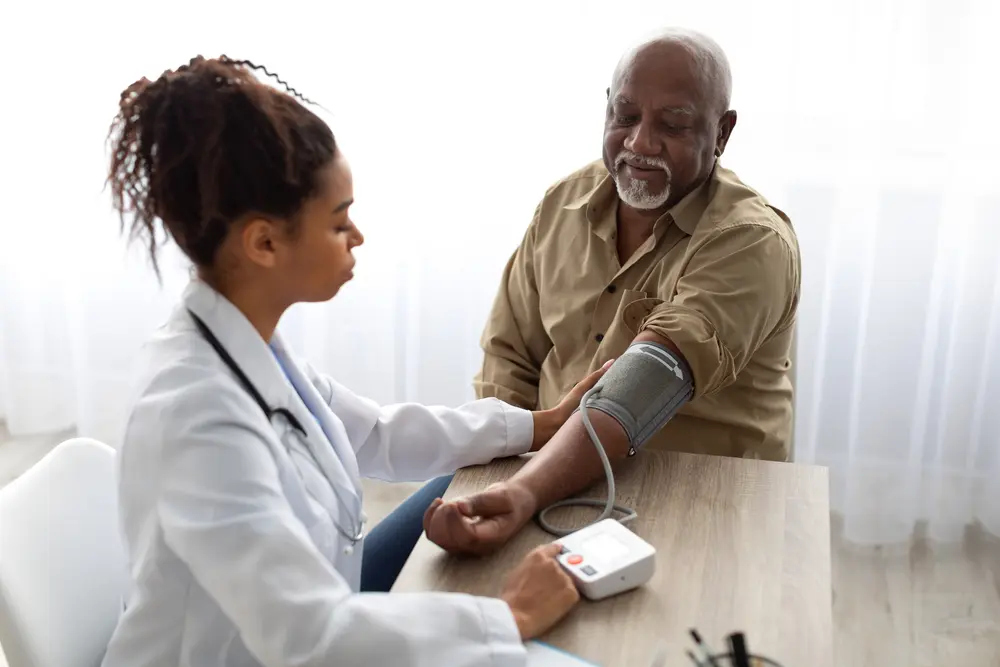Recent research has shed light on a crucial factor affecting blood pressure readings: arm position during measurement. The study, published in JAMA Internal Medicine, underscores the importance of proper arm placement for accurate blood pressure assessments.
Blood pressure is measured using two key numbers: systolic and diastolic pressure. Systolic pressure, the upper number, indicates the force of blood against artery walls when the heart beats. Diastolic pressure, the lower number, measures this force between heartbeats. Accurate readings are vital, as nearly half of U.S. adults are affected by high blood pressure, or hypertension, which can lead to serious health issues like heart attacks and strokes.
The study involved 133 adults, predominantly Black and female, aged 18 to 80. Participants had their blood pressure measured in three different arm positions: resting on a surface, resting on their lap and hanging by their side. The results were striking:
• When arms hung freely, systolic pressure readings were nearly 7 points higher compared to when arms were supported on a desk.
• With arms resting on laps, systolic pressure increased by 3.9 points.
These differences can lead to misdiagnosis of hypertension, potentially resulting in unnecessary medication prescriptions. For instance, a reading of 134 could be misclassified as stage 2 hypertension if measured with the arm hanging down, pushing the reading above 140.
To ensure accurate blood pressure readings, the American Heart Association recommends:
• Supporting the arm on a flat surface at heart level
• Avoiding caffeine, exercise and smoking for at least 30 minutes before measurement
• Keeping feet flat on the floor and back supported during the reading
Dr. Tammy Brady, the study’s senior author and a pediatrician at Johns Hopkins Children’s Center, emphasizes the need for patients to be informed about proper measurement techniques. She hopes this research will empower patients to advocate for themselves and ensure their blood pressure is measured accurately.
Health care professionals stress the importance of proper arm positioning. Dr. Karyn Singer from New York University notes that mispositioning is a common issue that can lead to significant discrepancies in readings. Patients should feel encouraged to speak up if they suspect their blood pressure readings are inaccurate.
Dr. Megan Kamath, a cardiologist at UCLA Health, highlights the real-world implications of this study. The findings suggest that something as simple as arm position can influence whether a patient is diagnosed with hypertension, which in turn affects treatment decisions.
As hypertension remains a prevalent health concern, understanding the factors that influence blood pressure readings is essential for both patients and health care providers. By following established guidelines and advocating for proper measurement techniques, patients can ensure they receive the most accurate assessments of their cardiovascular health.
The study’s findings serve as a reminder of the nuances involved in medical measurements and the importance of standardized procedures. It also emphasizes the role patients can play in their own health care by being informed and proactive.
For health care providers, this research underscores the need for consistent and precise measurement techniques. It may also prompt a reevaluation of existing practices and potentially lead to more standardized protocols across health care settings.
As research continues to refine our understanding of medical diagnostics, studies like this one play a crucial role in improving patient care and treatment outcomes. By ensuring more accurate blood pressure readings, health care professionals can make more informed decisions about hypertension management, potentially reducing over-diagnosis and unnecessary treatment.
Ultimately, this study highlights the ongoing importance of rigorous medical research in improving even the most routine aspects of health care. As our understanding evolves, so too should our practices, always with the goal of providing the best possible care for patients.




